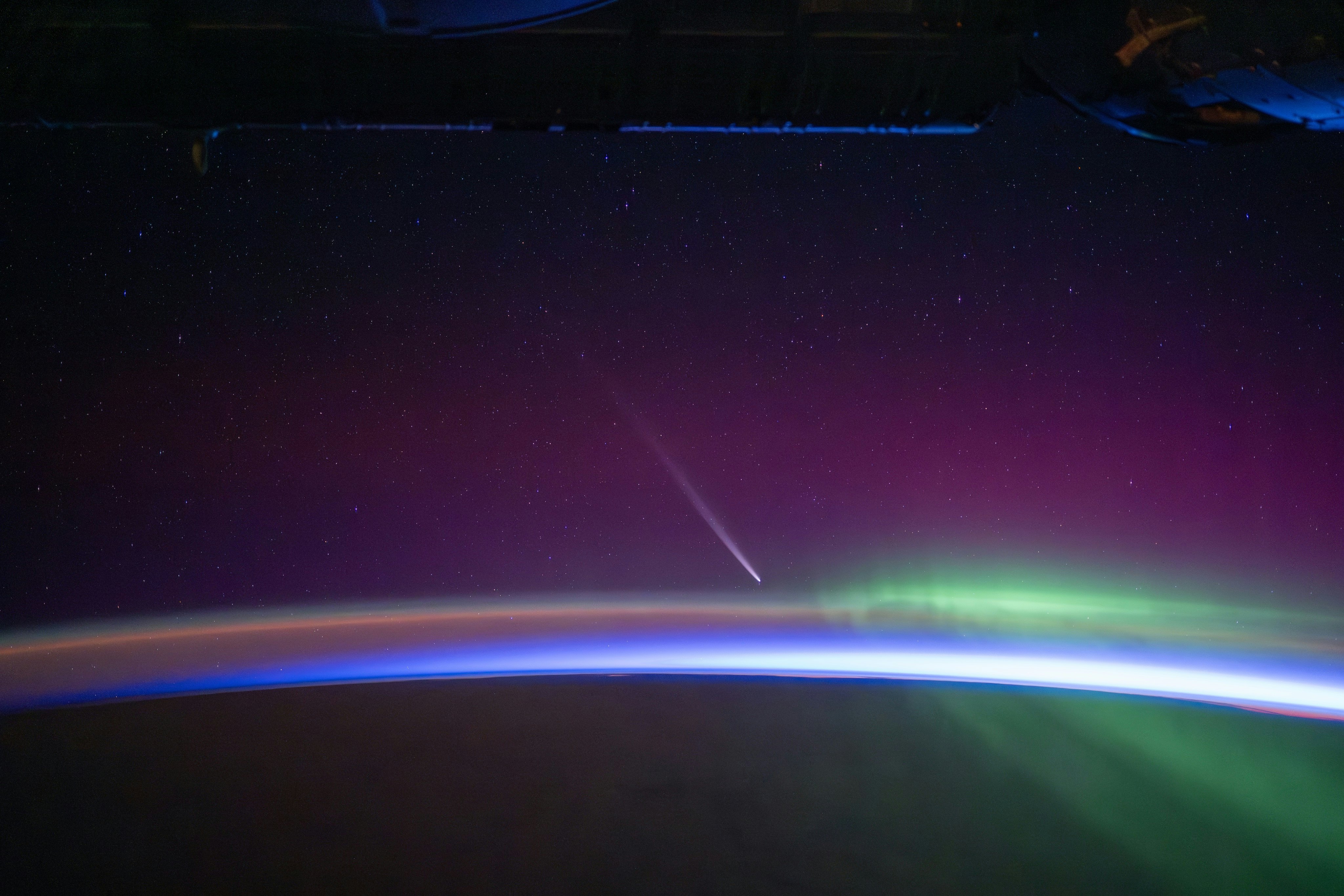
A comet that hasn’t been seen since Neanderthals and mammoths were alive will make its closest approach to Earth this month — and we won’t see it again for another 80,000 years.
Comet C/2023 A3 Tsuchinshan-Atlas will pass just 44 million miles from Earth on October 13, and it should be bright enough to see with the unaided eye. This comet only passes through the inner Solar System once every 80,000 years, so it’s a once-in-a-civilization sight.
“Naked-eye-visible comets are rare enough as it is, and this one has the potential to be amongst the brightest that we’ve seen in the last few decades,” Royal Observatory Greenwich astronomer Gregory Brown recently told The Guardian.

What is Comet C/2023 A3 Tsuchinshan-Atlas?
The comet is one of the trillions of icy objects that make up the Oort Cloud, a spherical cloud of icy leftovers from the Solar System’s formation. These objects orbits Sun thousands of times further away than Earth, out where it’s cold and dark — but every once in a while, one of them swings by for a visit. Some of the Oort Cloud’s residents have, over time, been nudged onto weird, tilted, stretched-out orbits that bring them swooping through the inner Solar System before flying back outward again. As they near the Sun, their icy shells evaporate in the heat, sending a spray of vapor and dust stretching out behind them like a tail. We call these objects comets.
Astronomers spotted Tsuchinshan-Atlas last year, and based on what we’ve seen of its path since then, it’s on a course that orbits the Sun once every 80,000 years or so, which means some of the last people to see this comet were members of entirely different species of human.
A Blast from the Past
Imagine flying past a planet once every 80,000 years or so, seeing snapshots of its evolution in something just short of geological time. Last time Tsuchinshan-Atlas passed through our neighborhood, everything was different. Much of Earth’s northern hemisphere lay hidden beneath miles-deep sheets of ice, and lower sea levels revealed stretches of land linking areas that are now cut off by water. Giant sloths wandered the Americas, woolly rhinos grazed in Europe, and mammoths stomped across the steppes of Eurasia.
At the time, an upstart species called Homo sapiens shared its evolutionary niche with other types of humans: Neanderthals, Denisovans, and — on a couple of tiny islands in Indonesia and the Phillipines — two diminutive species called Homo floresiensis and Homo luzonensis. Many of them would probably have noticed the comet, although we can’t be sure what they thought of it.
Tsuchinshan-Atlas has spent the last 80,000 years making a long, narrow loop around the Sun, flying through the darkness of the outer Solar System before turning to fall back toward the light. Meanwhile, on Earth, the ice receded, the seas rose, the megafauna died off, and Homo sapiens took over the world. The other human species who once shared our planet are long gone.
The comet’s visit is a link to our deep past and a slightly unnerving prompt to think about our future. There’s no way to know what Earth might look like the next time Comet C/2023 A3 Tsuchinshan-Atlas passes by, or whether humans will still be here to see it, but we can hope.
How to See Comet C/2023 A3 Tsuchinshan-Atlas
Tsuchinshan-Atlas is passing right between Earth and the Sun over the next week or so, and the Sun’s blinding glare will make the comet almost impossible to spot. But starting on October 10, Tsuchishan-Atlas will move out of alignment with the Sun, so we’ll be able to see it against a dark sky with sunlight gleaming off its icy tail. Look low in the western sky in the first hour or two after sunset, and you should be able to spot a bright, blurry streak of light in the sky.
The best way to view the comet, or any object in the night sky, is from the darkest place you can (safely and legally) get. Turn off your headlights, flashlight, and phone, and give your eyes 20 or 30 minutes to adjust to the dark; that will make a tremendous difference. If you have a telescope, or even a good pair of binoculars, they’ll give you a sharper, clearer view of the comet.







